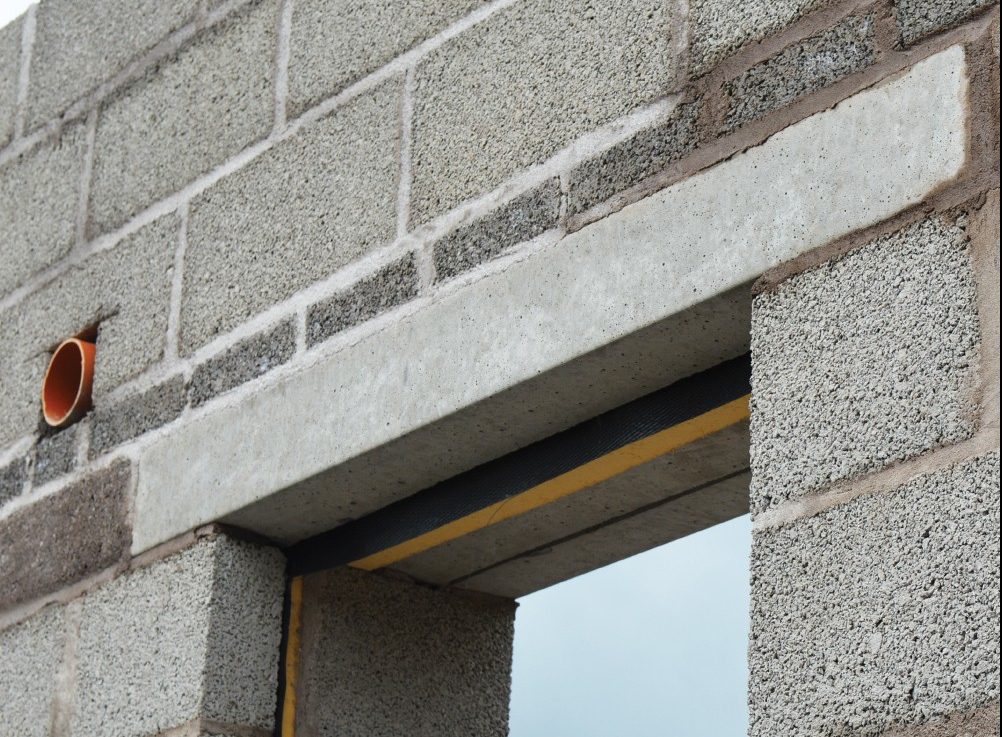A lintel plays an important role in the construction of buildings. It is a beam that bridges the gap between two vertical supports. Lintels are used to create openings like doors or windows inside a building.
There are many types of lintels available and they can be classified based on the elements used to develop them. In this article, we will discuss various types of lintels and their pros and cons.
What a lintel is?
According to Designing Buildings, materials that are used for constructing lintels are steel, timber, and concrete. A lintel is a type of beam-like structure that is used to provide support to the above wall when doors, windows, and other such openings are necessary to give a building its proper structure. The main purpose of a lintel is to take the load coming from the above wall and transfer it to the side walls.
Advantages of lintels:
- They are simple and easy to construct.
- Centering of lintels is easy.
- They can bear a huge amount of load if the load is uniformly distributed.
- They are delicate and simple in looks.
Types of lintels
There are six types of lintels according to the materials of their development:
Timber Lintels
This type of lintel is used where wood or timber is easily accessible like in hilly areas. It consists of two wooden pieces placed at a distance with the help of wooden packing pieces in case of wider walls. They are strengthened using mild steel plates. Timber lintels have some disadvantages:
- It is costly.
- It is less durable.
- Timber is combustible and so it is vulnerable to fire.
- They also rot due to a lack of proper ventilation.
Stone Lintels
This type of lintel is found in the areas where stones are available in plentiful amounts. The thickness of stone lintels is the most significant factor of its design. They are mostly used in mountainous buildings due to their heavyweight and due to the insufficiency of other materials for their construction. Stone lintels also have some problems.
- Stone lintels are costly and are unable to withstand excessive traverse stress.
- They have weak tensile strength.
- Its transportation is very complex.
Brick Lintels
Brick lintels are made of hard and well-burnt bricks and are generally used when openings are less than 1m. Their depth varies from 10cm to 20cm based upon the span. Mortal-filled bricks with frogs provide more shear resistance to the brick lintels.
Reinforced Brick Lintels
Brick lintels may not withstand heavy loadings and the huge gap between the openings. This problem can be solved by using reinforced brick lintels. Reinforced brick lintels are more durable and provide more support as compared to brick lintels. The bricks should be arranged in such a way that there should be an adequate amount of space available lengthwise for insertion of the middle steel bar for reinforcement.
Reinforced Concrete Lintels
Presently, reinforced concrete lintels are very commonly used. This type of lintels is used to overcome the low malleability issue in concrete. They are capable of withstanding heavy loads and a wider span. Reinforced concrete lintels can be precast as well as cast-in-situ. The depth of this lintel mainly depends on the span width and the magnitude of the load. Main reinforcement bars are used at the bottom and the ends to resist the tensile stress and half of these reinforced bars are cranked. This type of lintel has many advantages:
- They are durable, strong, and also rigid.
- They are economical and can be easily used in construction.
- They are resistant to fire.
Steel lintels
Steel lintels are mainly used when heavy loads are imposed and the gaps are wider and also the lintel depth plays an important role. Steel lintels also consist of channel sections or steel beams which can be utilized as a single unit or as a combination of more than one unit depending upon the requirements. When they are used as a single unit they are either implanted in concrete or covered with the stone facing to maintain the width according to that of the wall. When used as a combination of more than one unit, they are placed side by side and tube separators are used to keep them in position. Some advantages of steel lintels:
- They can withstand heavier loads over more eminent gaps without the need for change or strength.
- They are resistant to rust and erosion.
- These lintels are more practical.
Conclusion
These are all about the six types of lintels and their properties. All the lintels have their respective properties and the type of lintel that is to be used depends solely on the type of construction, its design, and the region in which the construction is going on.

